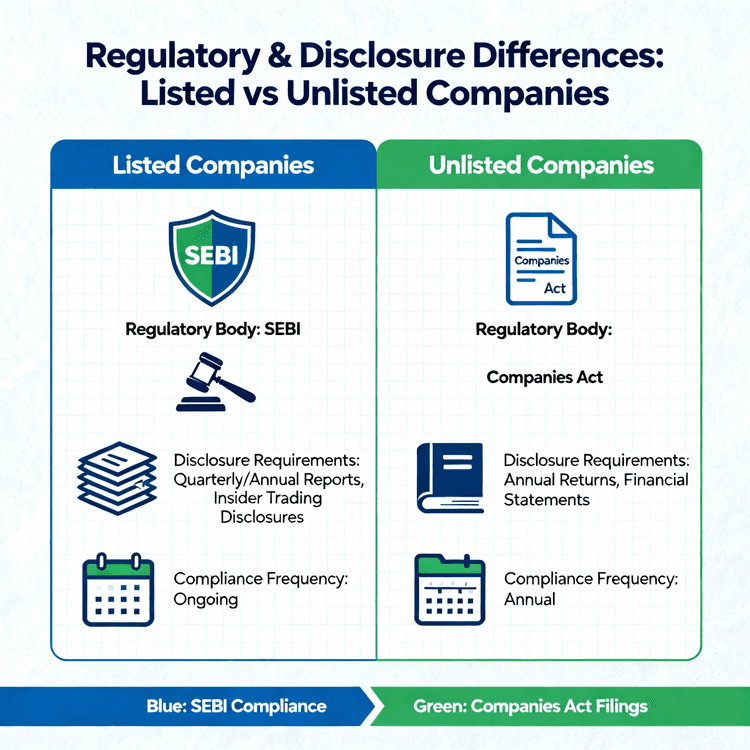The National Stock Exchange of India (NSE) is moving closer to its long-awaited public listing, and its performance in FY25 suggests it's entering this new chapter from a position of strength. With consolidated revenues of ₹19,177 crore (a 17% YoY increase) and net profits of ₹12,188 crore (a 47% YoY jump), the exchange is clearly on solid financial footing. Its board has even proposed a ₹35-per-share dividend for the year, a strong signal of profitability and confidence.
In contrast, the Bombay Stock Exchange (BSE), which went public in 2017, is smaller by comparison, Q4 FY25 revenue stood at ₹926 crore, with profits of ₹478 crore. Yet, BSE has delivered staggering returns to shareholders, about 934% over three years. That kind of post-IPO performance has stoked investor excitement for NSE’s debut. The buzz is already visible: unlisted shares of NSE saw a surge. [View Current Market Price of NSE Unlisted Shares]
Strengths
➢ Dominant Market Position and Scale.
NSE’s influence over India’s capital markets is unmatched. It has held the title of the world’s largest derivatives exchange by volume for five consecutive years as of 2023 and ranks third globally in equity trading. Its FY25 market share in derivatives turnover was about 74%, leaving rivals far behind. In equities too, NSE historically controls over 90% of trading volume in India.
The numbers speak volumes: by the end of 2025, over 22 crores were registered with NSE. This sheer scale, across cash equities, derivatives, currency, and debt, makes it the top revenue earner in India’s trading ecosystem. Smaller platforms, in comparison, remain niche players.
➢ Strong Financial Performance.
FY25 marked a record year for NSE’s bottom line. With consolidated total income of ₹19,177 crore (up 17% YoY) and PAT of ₹12,188 crore (up 47% YoY), the exchange delivered robust results. Operating EBITDA hit ₹12,647 crore, reflecting a 74% margin. These gains were driven not just by trading activity, but also by non-operating income like investment returns.
Perhaps most strikingly, the exchange clocked a return on equity (ROE) of nearly 45%, indicating highly efficient capital use. NSE also contributed ₹59,800 crore to the government in transaction taxes alone, underscoring its central role in India’s financial framework.
➢ Diversified Products and Services.
While equities and derivatives remain NSE’s backbone, it has steadily diversified. It operates primary market platforms for IPOs and bonds, runs currency and debt markets, and introduced bullion futures in 2018. Interest rate futures are on the horizon.
The Nifty index brand, meanwhile, is gaining global traction. FY25 saw 11 new passive funds launched in Japan and Korea based on Nifty indices, joining 391 ETFs and index funds (with ₹7.1 lakh crore AUM) tracking Nifty in India. These indices generate valuable licensing and data revenues.
NSE Clearing, its risk management and clearing arm, also supports other exchanges. Overall, this diversity, from listing fees to clearing income, reduces reliance on a single segment and adds resilience to NSE’s business model.
➢ Surging Retail Participation.
Retail investor engagement with NSE continues to climb. In FY25 alone, 8.4 million new demat accounts were opened via NSE brokers, a 20.5% increase, bringing the total to 4.92 crore.
Even retail shareholding in NSE itself more than doubled in early 2025 to nearly 34,000 individuals, reflecting optimism about the listing. Compared to BSE’s IPO, which had fewer retail participants initially, NSE appears to be drawing in the retail crowd more effectively. Its focus on education, branding, and ease of use is clearly paying off.
All told, NSE stands on a firm foundation: dominant market share, excellent FY25 financials, a robust product lineup, and a growing investor base. It already serves as the backbone of India’s capital markets. These strengths position it well for a strong IPO and long-term success.
Weaknesses
➢ Governance and Regulatory Scrutiny.
While NSE has faced governance challenges in the past, including the 2018 co-location case, delays in leadership appointments, and regulatory concerns around its clearing arm ownership, these issues have now been comprehensively addressed. In October 2024, NSE paid a ₹643 crore settlement to SEBI, effectively closing the chapter on the co-location matter. The exchange has also appointed a new chairperson and restructured key governance protocols to align with SEBI’s expectations.
With these reforms, NSE has restored regulatory confidence, removing a major overhang on its IPO prospects. What once delayed its listing is now resolved, making the path clear for NSE to move forward with renewed transparency and compliance.
➢ Revenue Concentration Risks.
Despite its diversification, a large chunk of NSE’s income still comes from trading and transaction fees. This creates vulnerability to market swings. In Q4 FY25, a dip in market activity led to a 13% YoY fall in revenue and a 31% QoQ drop in profit.
Expenses like tech and personnel are relatively fixed, so profit margins can get squeezed in slower periods. Though other income sources exist (like licensing), trading activity still dominates the P&L. This dependency on market sentiment makes NSE financially cyclical, a key weakness.
➢ Ownership Structure Concerns.
NSE is owned by financial institutions that also trade on its platform, a structure that raises potential conflicts of interest. Moreover, it holds a majority stake in its clearing subsidiary, something SEBI has questioned. While NSE maintains that it complies with all rules, and points to other exchanges with similar setups (like BSE), scrutiny persists. This overlap between ownership and regulatory function has proven controversial, adding complexity to its listing process.
These weaknesses don’t diminish NSE’s core strengths, but they highlight key areas requiring vigilance. With unlisted shares still illiquid and some governance matters unresolved, investor caution persists. Tackling these head-on will be crucial for a smooth IPO.
Opportunities
➢ IPO and Value Unlocking.
The most exciting near-term opportunity for NSE is its own listing. If executed well, the IPO could significantly boost the exchange’s market visibility and valuation. Investors are already drawing comparisons to BSE, which delivered value via dividends, bonuses, and buybacks, and saw its stock price soar.
NSE has filed for a No-Objection Certificate with SEBI, signaling readiness. With many governance issues now addressed, including resolution of the co-location case, a listing looks more likely. Given NSE’s scale and profitability, investor expectations are high.
For those holding unlisted shares, an IPO would provide liquidity and price discovery. NSE could also tap public equity markets to fund future growth or acquisitions. Much like BSE’s transformative IPO, NSE’s listing could unlock massive value.
➢ Product and Global Expansion.
NSE has a clear path to further expansion. It can capitalize on RBI’s push for a robust interest rate derivatives market by launching more futures and swaps. In commodities, adding more products beyond bullion (like energy or industrial metals) could widen its reach.
Globally, the “Nifty” brand has legs. The 11 new passive funds launched in FY25 in Japan and Korea are just a start. NSE can grow its presence by licensing products to international exchanges and boosting foreign investor interest in India-focused ETFs.
Domestically, expanding the debt platform, particularly into corporate and municipal bonds, can address India’s infrastructure funding needs. Innovations like the Social Stock Exchange can also pave the way for ESG-focused instruments, green bonds, and sustainable indices. Every new segment offers an additional revenue stream.
Threats
➢ Regulatory Delays.
While regulation has helped shape NSE’s strength, it also represents a major hurdle. As of mid-2025, its IPO timeline remains uncertain. SEBI insists that all governance issues must be fully resolved. Despite significant progress, some loose ends remain.
If the listing is delayed further, changing market conditions or waning investor enthusiasm could affect valuations. Moreover, regulatory changes in the exchange sector could impact NSE more than its smaller peers. The ongoing scrutiny, especially around its clearing structure and tech upgrades, continues to cast a shadow.
➢ Market Volatility and Economic Risks.
NSE’s fortunes are tied closely to the health of India’s markets. A sharp downturn, whether triggered by global shocks or domestic challenges, would hit trading volumes hard. The exchange’s heavy reliance on transaction fees makes it vulnerable in bear markets.
A sluggish economy would also reduce IPO activity, bond issuances, and listings, all important revenue drivers. Inflation, rate hikes, or geopolitical tensions could similarly dampen sentiment. Though India’s macro outlook remains strong, such risks are beyond NSE’s control but directly impact its operations.
NSE’s long-awaited IPO could well become one of the most defining events in India’s capital markets. Its scale, profitability, and market dominance offer a compelling foundation for future growth, qualities that investors have already recognized, as seen in the sharp surge in demand for
.
The rising valuations and trading activity in this unofficial market reflect strong anticipation and belief in NSE’s potential to replicate, or even surpass, BSE’s post-listing success. With governance reforms underway and a robust retail and institutional base in place, NSE could unlock value for shareholders.



